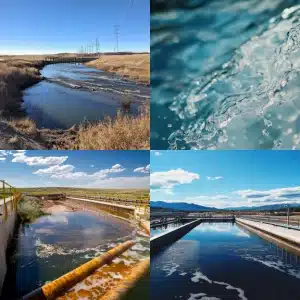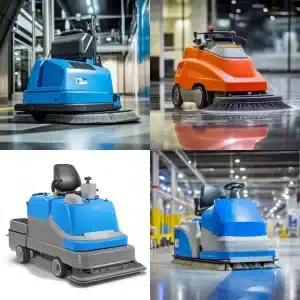
Compliance with Regulation 4 for ASME Pressure Vessels is a practical safety commitment, not just paperwork. It ensures vessels are designed, built, tested, and maintained to manage pressure risks while meeting recognized standards. When you treat Regulation 4 as a lifecycle practice, you reduce downtime, prevent failures, and protect teams. RedRiver LLC supports compliant fabrication and ongoing readiness with a steady, safety-first approach.
Why Compliance with Regulation 4 for ASME Pressure Vessels Matters
Compliance with Regulation 4 for ASME Pressure Vessels plays a vital role in ensuring safety and adherence to industry standards. Manufacturing ASME pressure vessels is a sensitive process that must always be in compliance with Regulation 4 if your business is going to remain within the bounds of legal and safety standards. So, what is Regulation 4, anyway, and how does it affect your business? At Red River, we recognize the subtleties of pressure vessel manufacturing and the criticality of compliance. Let’s break down Regulation 4 and examine how it impacts major industries such as oil and gas, power generation, and more.
What Does Regulation 4 Cover?
Regulation 4 shall cover standards and requirements for safety in the design, fabrication, and inspection of pressure vessels. Such a pressure vessel shall ensure that pressure vessels for industrial purposes are built with the best safety and performance standards. For manufacturers like RedRiver, keeping up with the needs regarding it is very important to provide a vessel that not just meets your needs but also industry expectations.
Importance of Regulation 4 in Compliance
Compliance with Regulation 4 is not about compliance checkboxes; it is about ensuring that your operation is safe, and people rely on you for their lives and livelihoods. We understand here at Red River that compliance with ASME standards and Regulation 4 is about quality products that protect your team and business.
Key Industries Affected by Regulation 4
Regulation 4, for instance, applies in an industry of this nature—in this case, the oil and gas industries—having the pressure vessels ensured to be safe. Red River specializes in serving this industry, providing prefabricated pressure vessels and custom solutions to meet the demands of high-pressure environments.
How Regulation 4 Affects Your Business
Regulation 4 plays a crucial role in ensuring the safe and reliable operation of ASME pressure vessels in different industries. For industrial plants that are involved in oil and gas, power generation, and biogas, the repercussions for not meeting these standards can start from costly time off to legal penalties.
Compliance with Regulation 4 Requirements
Compliance with Regulation 4 is not a one-off check-the-box process but is, rather, an ongoing commitment. Red River integrates strict quality control measures into every step of the manufacturing process, providing traceability of materials in full and observance of all regulatory guidelines.
Risks for Non-Compliance with Regulation 4
Failure to comply with Regulation 4 could lead to fines, litigation, or even shutdowns. More importantly, it risks putting your people’s and equipment’s safety at risk. By partnering with Red River, you are protecting your business from those dangers and keeping your doors open.
How to Comply with Regulation 4
For establishments that operate with pressure vessels, Regulation 4 must be complied with. This includes discussing safety, design, and manufacturing requirements to be met in the rule to escape risk in a potential way.
Key Requirements for Compliance
Regulation 4 requires strict observance in the design, fabrication, and testing standards of pressure vessels. Materials applied shall be certified, and the codes followed shall include ASME Section VIII, Division 1, among others.
How Red River Helps with Regulation 4 Compliance
Made to meet that small measure easier with tailored solutions from Red River. With years of experience designing Regulation 4 and ASME-compliant pressure vessels, you can be confident in the safety and quality that we offer.
Compliance with Regulation 4 for ASME Pressure Vessels Protects People and Performance
Compliance with Regulation 4 for ASME Pressure Vessels is a safety system that follows your equipment from design through long-term service. It keeps vessels aligned with recognized standards, supports clean inspections, and reduces the chance of failure under pressure. When compliance is treated as a lifecycle practice, operations stay safer, downtime drops, and vessels last longer. RedRiver LLC builds pressure vessels that support this standard of compliance through disciplined fabrication, inspection readiness, and practical documentation.
Need a reliable partner?
Red River specializes in the design and manufacturing of pressure vessels. We also fabricate related items such as prefabricated spools and skid packages.
Reach Out to us today and experience the Red River difference. Where American Made and American Values come together, we care more.
FAQs
1. What does Regulation 4 serve in pressure vessel manufacturing?
Regulation 4 sets safety requirements for pressure vessel design, fabrication, inspection, and documentation. Its purpose is to reduce failure risk and ensure vessels operate safely under pressure.
2. Which pressure vessels are subject to Regulation 4?
Regulation 4 applies to pressure vessels used for industrial storage, processing, and heat transfer where pressure containment is a safety concern. The scope depends on service type and operating limits.
3. How often do pressure vessels need to be inspected under Regulation 4?
Inspection frequency depends on vessel duty, operating environment, and risk evaluation. More demanding or corrosive services typically require tighter inspection intervals than mild services.
4. How to inspect a pressure vessel for Regulation 4 compliance?
Inspection should include visual checks, thickness measurement, weld review, nozzle evaluation, and internal condition checks when possible. Results must be documented and compared to previous inspections.
5. What is ASME code for pressure vessel safety, and how does it relate to Regulation 4?
ASME code provides construction and testing rules for pressure vessels. Regulation 4 reinforces that these rules must be applied consistently and proven through inspection and documentation.
6. What to include in a pressure vessel inspection checklist?
A checklist should cover external condition, wall thickness readings, weld integrity, nozzle and attachment areas, internal corrosion or deposits, operating history review, and full recordkeeping.
7. How do pressure vessels comply with safety regulations over their service life?
They comply through correct operation within limits, ongoing Pressure Vessel Inspection and Maintenance, qualified repairs, and complete documentation that verifies continuous integrity.
Key Takeaways
- Compliance with Regulation 4 for ASME Pressure Vessels ensures safe design, fabrication, inspection, and records.
- Pressure Vessel Safety Standards and Compliance reduce failure risk and protect teams.
- ASME safety rules form the baseline for structural integrity and testing.
- Pressure Vessel Inspection and Maintenance keeps compliance active over time.
- RedRiver LLC supports compliant builds and inspection-ready vessels at https://www.redriver.team/.
Related Blog Post


Common Signs Your Drinking Water May Be Unsafe | Red River

Choosing the Most Effective Scrubber Machine for Your Needs
Understanding Unregulated Drinking Water Sources | Red River
- Regulation 5 for private water supplies: What Owners and Operators Need to Know
- Water Regulations and Their Industrial Impact
- EU Water Regulations: Key Directives and Industrial Impact
- What Are WRAS Water Regulations? Compliance & Safety Guide
- Understanding Water Regulations Fluid Categories | Red River
- Water Supply Regulations 1999: Key Compliance Guide
